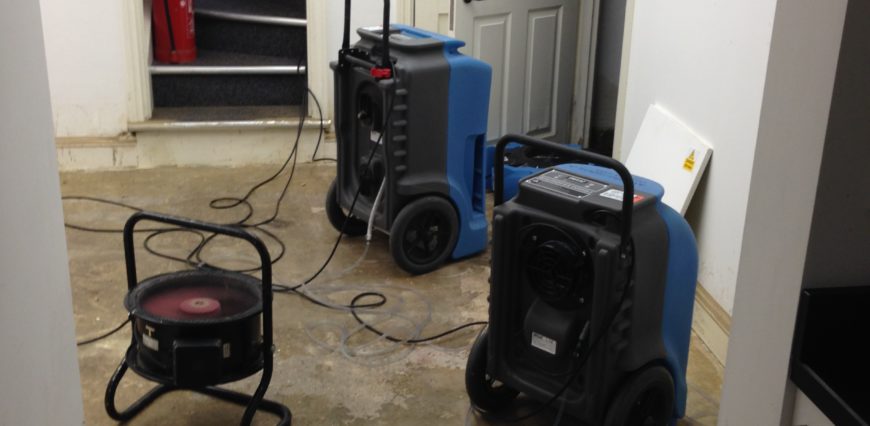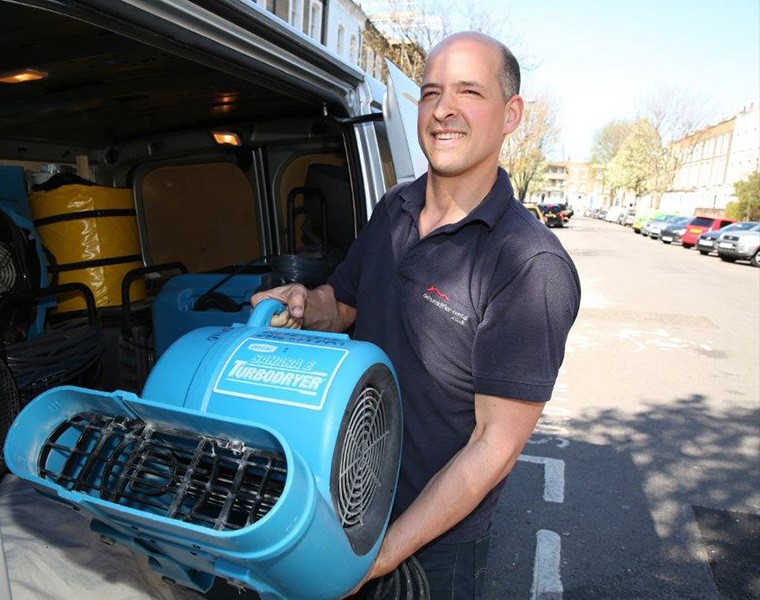
How to dehumidify a Garage?
Garages offer an ideal storage solution for your possessions, and whilst items may be safe from the elements, the temperature drops in the autumn and winter months can result in an increased moisture level in the air. These humidity levels lead to damp and mould damaging boxed up items as well as upholstery on any cars, motorbikes or wooden tools in the garage.
We’ve dealt with a few damp garages recently, with these particular cases caused by external floor drainage issues or from plumbing leaks in the colder weather.
A typical domestic garage, such as found attached to a detached or semi-detached house may be of concrete floor construction, with block or brick walls. These walls may be covered with plasterboard or a different finishing sheet material.
Dehumidifying your garage
- Equipment used to dry a typical garage may be an industrial dehumidifier together with one or two industrial fans to circulate dry air around all of the floor. We often find garages are unheated this makes it necessary to add a portable heater in order to boost the temperature and enhance the performance of the dehumidifier.
- Drying environment required for a garage, as best with all rooms, is as closed-air as possible. If a garage door is barn style or an up-and-over type door, attention should be paid to possible air gaps that let in too much air from outside. It may be necessary to sheet/tape over these gaps in order to close off the outside air as best as possible.
- Floor preparation would mainly be the removal of any floor coverings that may be restricting the evaporation of moisture out of the concrete, particularly removing linoleum floor covering if present.
- Wall preparation is highly recommended if surface finishes are affected by water damage. Plasterboard wall finish for example may need to be cut away in order to expose the structural material behind.
- Drying time for dense materials such as concrete and brick/concrete block could be around 4 weeks depending on the degree of saturation. Consistent use of drying solutions will result in long term results instead of a quick fix.
- Disinfecting/cleaning may be required particularly for flooding from a drainage issue, in order to decontaminate and help reduce the likelihood of any adverse health effects taking hold in the property.
As the garage is external to the home, it can be easy to leave the dehumidifier running without checking on it. To ensure that your equipment is providing a continuous drain, remember to periodically check the collection tank hasn’t reached full capacity.
Our expert team will be able to guide you on which types of dehumidifiers will suit the space and your needs best. For any advice on humidity, water damage or damp levels in your home or commercial property, please contact us on 020 7760 7660 or help@dehumidifier-rental.co.uk
 020 7760 7660
020 7760 7660